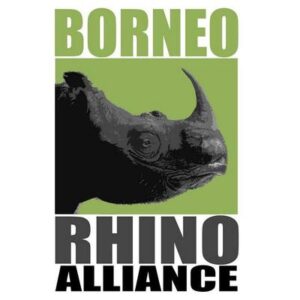What is the Sumatran Rhino?
The Sumatran rhino is the smallest of all rhino species. It’s a two horned rhino, covered with hair and is the closest living relative of the woolly rhinos from the ice age. These rhinos have lived for millions of years and once roamed across most of South-east Asia. From southern China to the islands of Borneo and Sumatra.
| The Sumatran Rhino | |||
| Critically endangered | Less Than 100 left | Without specialized help, the species will go extinct | But there is still hope |
But today, the Sumatran rhino is tragically close to extinction. Less than 100 are left.
In Indonesia, there are fewer than 80 individuals, with seven of these rhinos in fenced facilities, and others scattered across the wild in at least six sites.
While in Malaysia, the situation is even more dire. There are only three Sumatran rhinos left, and they are being cared for in BORA’s Borneo Rhino Sanctuary, located in Sabah.
Why is it under threat?
Due to a thousand years of relentless hunting throughout Asia for their horns, Sumatran Rhino numbers were severely depressed by the early twentieth century.
Habitat loss from human population growth and farming further affected the population.
But these two problems have combined to create a different threat a lack of breeding.
There are now too few rhinos left, and they are scattered across the wild. Unable to find each other, there is no breeding.
This result in a severe decline of Rhino births. And over the past century, the annual death rate of the Sumatran rhino has far exceeded the birth rates. Pushing the Sumatran Rhino right onto the edge of extinction.
The traditional conversation measures of awareness, reducing poaching and focusing on wildlife habitat protection are far too late. The Sumatran rhino is about to go extinct because there are not enough rhinos left in the world to breed naturally.

BORA’s Mission
Borneo Rhino Alliance (BORA) is a non-governmental organization based in Sabah, Malaysia. Our goal is to prevent the extinction of the Sumatran rhino.
History of BORA
BORA started on its current role in 2008, as a continuation of an older NGO called SOS Rhino which had been monitoring wild rhinos in Sabah. In 2008, it was realized that there were too few rhinos left to save the species in the wild and that drastic action was needed.
Established as a Malaysian not-for-profit company, BORA operates under the supervision of the Sabah Wildlife Department.
The rhinos under BORA are cared for by one veterinarian with seven full-time keepers plus five back-up staff to harvest rhino food from the forest and to maintain the rhino facilities.
The Borneo Rhino Sanctuary was open in 2019. Any bookings must be done through Tabin Wildlife Resort. Kindly email to enquiry@tabinwildlife.com.my
What is BORA doing to save the species?
One thing is clear: if this rhino is to be saved from extinction, there has to be just one programme, with each rhino managed to help it produce babies.
BORA’s mission has seen them bring in rhinos from the wild, into their captive breeding facilities with the sole goal of producing baby rhinos. But with the female rhinos found to have reproductive pathologies, natural conception is not possible.
As the situation is so dire, BORA’s focus will be on advanced reproductive technology – with an emphasis on making embryos in the laboratory by in-vitro fertilization.
Teaming up with experts from Germany, Italy and Indonesia, experimental attempts are underway to create the world’s first test tube Sumatran rhino embryo and implant it into a viable surrogate.

